If you’re interested in starting a reef tank, you’re in luck—growing corals is a relatively easy process that can be very rewarding. In this beginner’s guide, we’ll cover everything you need to know to get started, from choosing the right coral for your tank to keeping your corals healthy and happy. By the end, you’ll be an expert on growing corals in a reef tank!
Choosing the Right Tank
A reef tank is a beautiful and delicate ecosystem. When choosing a tank for your reef, it is important to consider the size, shape, and material of the tank.
A larger tank will also allow for more coral growth. The larger the tank, the more stable the ecosystem will be. Size is an important factor in choosing a reef tank.
Shape is also important when choosing a reef tank. A rectangular tank is the best shape for a reef tank because it provides the most surface area for coral growth.
Material is another important factor to consider when choosing a reef tank. Glass is the best material for a reef tank because it is clear and allows for the most light to reach the coral.
Correct size to keep corals
Smaller corals can be easily overwhelmed by larger fish and other corals, and may not receive the proper amount of light and nutrients. Conversely, large corals can quickly take over a tank, and may harm smaller fish and other corals. Corals are a beautiful addition to any reef tank, but it is important to make sure they are the correct size for your tank.
The best way to ensure your coral is the correct size for your tank is to consult with a reef specialist. They will be able to help you choose the right coral for your tank size and setup.
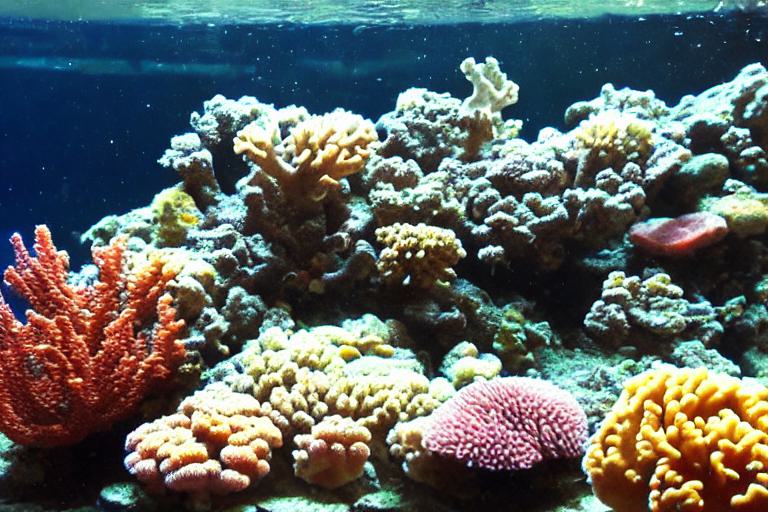
The recommend tank material is acrylic
Acrylic is a popular choice for reef tanks because it is strong and durable. It is also clear, so you can see your corals and fish easily. Acrylic tanks are easy to clean and maintain, and they are relatively inexpensive. If you’re thinking about starting a reef tank, you may be wondering what the best material is for the tank. If you’re looking for a durable, affordable, and attractive material for your reef tank, acrylic is a great option.
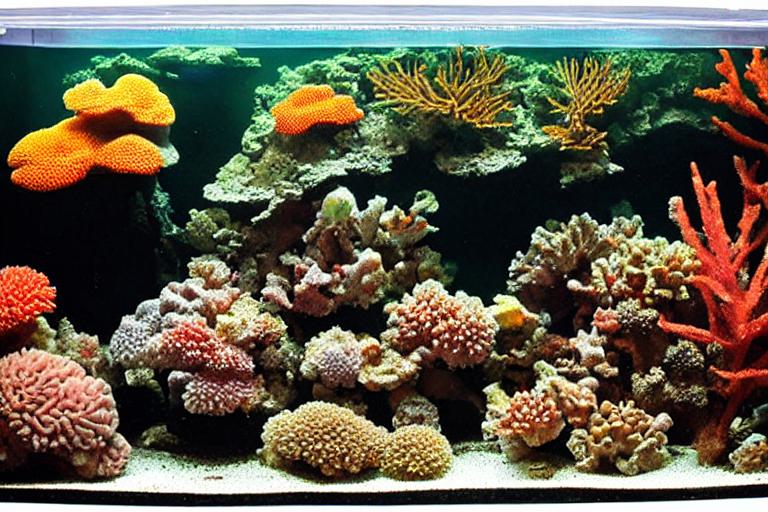
Tank Setup for Growing Corals
However, before you can start growing corals, you need to set up your tank properly. Here are a few tips to help you set up your tank for growing corals: A reef tank is a unique and beautiful addition to any home, and growing corals in your reef tank can be a rewarding experience.
Choose the right location for your tank. Your reef tank should be located in a room with good lighting and moderate temperature and humidity levels. 1.
2. A reef tank should be at least 50 gallons in size. Select the right size tank.
If you are a beginner, it is best to choose a coral that is relatively easy to care for. 3. Some corals are easier to care for than others. Choose the right type of coral.
Set up your tank properly. 4. Be sure to follow the manufacturer’s instructions when setting up your tank.
5. Do not expect instant results. Have patience. Growing corals takes time and patience.
By following these tips, you can set up your tank for success and start growing beautiful corals.
Salt Water
The ocean is a vast and complex ecosystem that is home to an incredible diversity of plant and animal life. Salt water is essential to life as we know it. Salt water is also a vital resource for industry and human settlement.
Despite its importance, salt water is under threat from a range of human activities. Pollution, overfishing, and climate change are all having a negative impact on the world’s oceans.
We can reduce our reliance on single-use plastics, support sustainable fishing practices, and campaign for stronger action on climate change. There are things we can do to help protect salt water.
By working together, we can help to ensure that the world’s oceans remain a vital part of our planet for generations to come.
Rock Selection and Placement
The success of your reef tank depends on many factors, but one of the most important is your choice of rock. A reef tank is a beautiful and delicate ecosystem.
Live rock also helps to stabilize the pH of your tank and provides essential nutrients for your corals. Live rock is an essential part of a reef tank. It provides a place for corals to attach and grow, as well as a home for beneficial bacteria.
This will ensure that your live rock is free of pests and diseases. When choosing live rock for your reef tank, it is important to select a variety of shapes and sizes. This will provide plenty of places for your corals to attach and grow. It is also important to choose live rock from a reputable source.
This will help to prevent the spread of disease and pests to your tank. Once you have selected your live rock, it is important to properly clean and cure it before adding it to your tank.
Once your live rock is properly cured, it is time to start placing it in your tank. Live rock can be placed in a variety of ways to create these hiding places. It is important to create a variety of hiding places and caves for your fish and invertebrates.
If you notice any changes in your tank, such as a sudden die-off of fish or corals, it is important to remove the live rock immediately. Live rock can sometimes release toxins into the water. Once you have placed your live rock in your tank, it is important to monitor it closely. These toxins can be harmful to your fish and corals.
By carefully selecting and placing your live rock, you can create a healthy and thriving reef tank. Live rock is a beautiful and essential part of a reef tank.
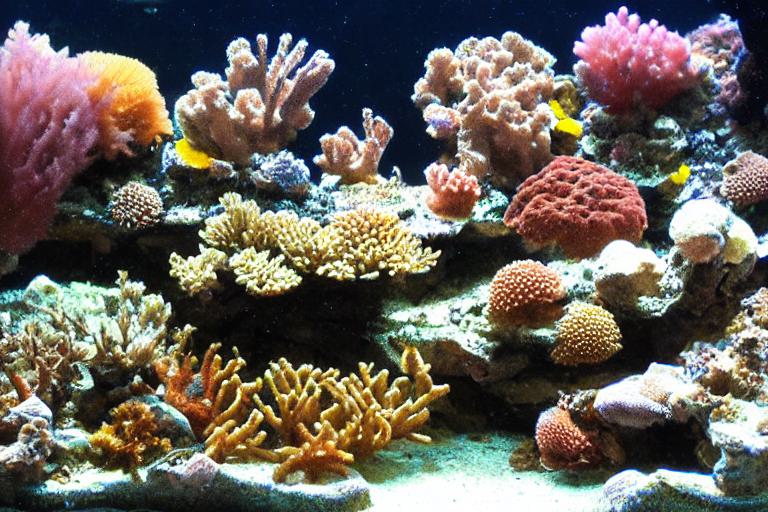
Lighting is important to grow corals
Lighting is one of the most important factors to consider when growing corals in a reef tank. The type of lighting, intensity, and duration all play a role in the health and growth of corals.
Metal halide and fluorescent lighting are also options, but LED lighting is typically more expensive. LED lighting is a popular choice for reef tanks because it is energy efficient and can be customized to provide the right light spectrum for coral growth.
The duration of the lighting should also be considered, as too much light can also be harmful to corals. The intensity of the lighting should be bright enough to promote coral growth, but not so bright that it causes bleaching.
By considering all of these factors, you can create a lighting setup that will promote healthy coral growth in your reef tank.
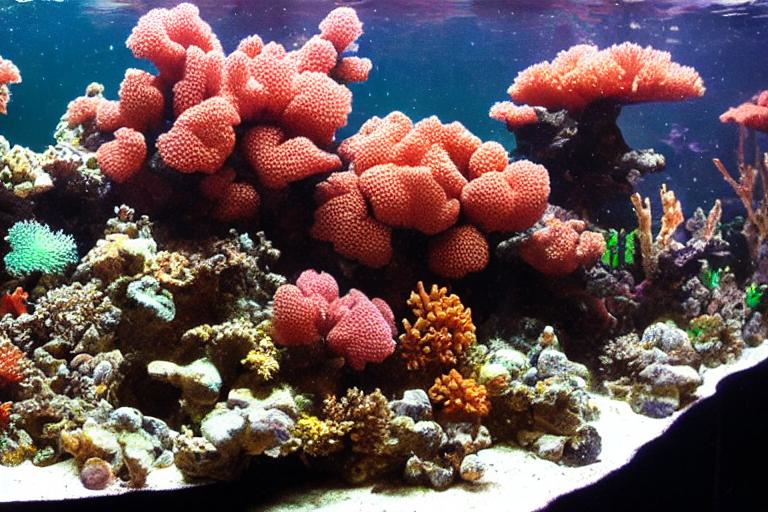
Water Parameters for growing corals
There are a few key water parameters that are important to maintain in order to have a successful reef tank with thriving corals. These parameters are temperature, alkalinity, calcium, and magnesium.
They prefer a water temperature between 75-82 degrees Fahrenheit. Temperature is probably the most important water parameter to maintain for corals. If the water temperature gets too high or too low, the corals will start to stress and may eventually die.
If the alkalinity level gets too low, the corals will start to dissolve. They need a alkalinity level between 8-12 dKH. If the alkalinity level gets too high, the corals will start to calcify. Alkalinity is another important water parameter to maintain for corals.
They need a calcium level between 400-450 ppm. Calcium is also an important water parameter for corals. If the calcium level gets too low, the corals will start to dissolve. If the calcium level gets too high, the corals will start to calcify.
Magnesium is the last important water parameter for corals. If the magnesium level gets too low, the corals will start to dissolve. They need a magnesium level between 1200-1350 ppm. If the magnesium level gets too high, the corals will start to calcify.
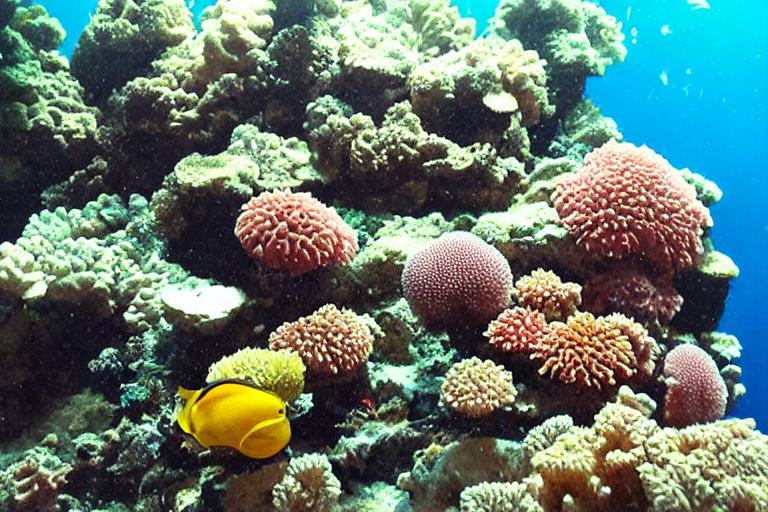
Water Flow and Movement
There are a few things to keep in mind when creating water flow in a reef tank. Water flow and movement are two of the most important factors to consider when growing corals in a reef tank. Without proper water movement, corals will not receive the nutrients they need and will eventually die.
A strong current can damage delicate coral tissue and cause them to lose their color. This will ensure that the coral receives the nutrients it needs. Second, water flow should be directed towards the coral, not away from it. First, it is important to create a flow that is gentle and consistent.
Too much light and the coral will bleached, too little light and the coral will not be able to photosynthesize. Finally, it is important to maintain a balance between water movement and light. By keeping these factors in mind, you can create a healthy environment for your corals to thrive.
Characteristics of Beginner Friendly Corals
But with so many different species of coral available, it can be difficult to know which ones are best for beginners. Here are some characteristics to look for when choosing beginner friendly corals: Corals are an essential part of a reef tank, providing both food and shelter for the inhabitants.
Corals that are easy to propagate: These corals will grow quickly and can be easily divided into new colonies. 1.
Corals that are tolerant of different water conditions: Some corals are very sensitive to changes in water quality, so it is important to choose ones that are tolerant of a wide range of conditions. 2.
Corals that are not aggressive: Some corals can be quite aggressive, sending out sweeper tentacles that can damage or kill other corals. 3. Beginner friendly corals are typically not aggressive and can be safely kept with other corals.
Corals that have a low light requirement: Not all corals need bright light to thrive, so it is important to choose ones that will do well in your tank. 4.
By keeping these characteristics in mind, you can choose beginner friendly corals that will thrive in your reef tank.
Robust corals are easier
They can better withstand changes in water parameters and are less likely to succumb to disease. As a result, they are a great choice for beginner reefkeepers. Robust corals are easier to grow in a reef tank than their less hardy counterparts.
They are often more aggressive than other coral types and can quickly overgrow their tank mates. That said, robust corals do have their own unique set of challenges. They also produce a lot of waste, which can lead to water quality issues if not properly managed.
With proper care and attention, they can thrive in even the most challenging reef environments. Despite these challenges, robust corals are a great option for beginner reefkeepers.
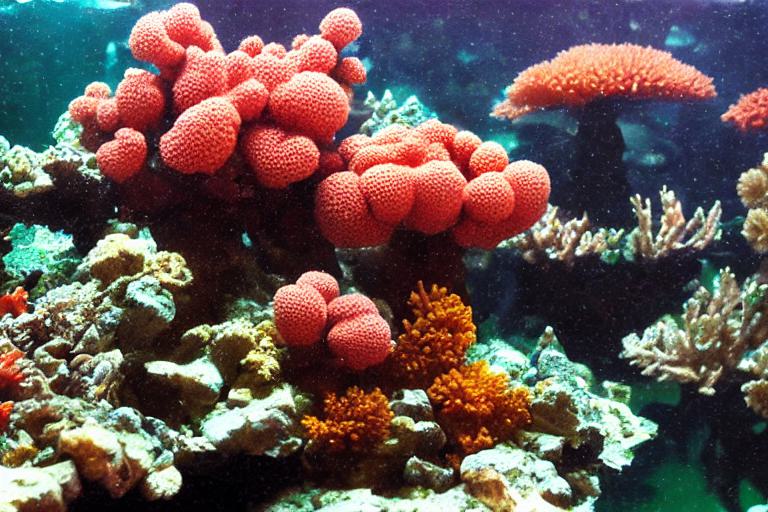
Photosynthetic
Photosynthetic corals are some of the most beautiful and vibrant corals in the world. Photosynthetic corals are a type of coral that gets its energy from the sun. They come in a wide variety of colors and can add a lot of color and life to a reef tank. These corals are found in shallow, clear waters where they can get plenty of sunlight.
These corals need at least 10 hours of direct sunlight each day in order to thrive. If you can provide them with the right conditions, they will grow and thrive in your reef tank. The most important thing to remember is to give them plenty of light. Growing photosynthetic corals in a reef tank can be a bit challenging, but it is definitely possible.
Stick with common and popular corals
Plus, there’s plenty of information available on how to care for common corals, so you can be sure you’re doing everything right. These corals are typically easier to care for and more resilient than rarer varieties. If you’re new to the world of reef tanks, it’s best to stick with common and popular corals.
With proper care, they can thrive for many years. Some of the most popular corals include brain coral, leather coral, and anemone coral. These corals come in a variety of colors and can add a lot of visual interest to your reef tank.
If you’re not sure which coral to choose, ask your local fish store or another reef keeper for advice. They can help you select a coral that will do well in your particular tank.
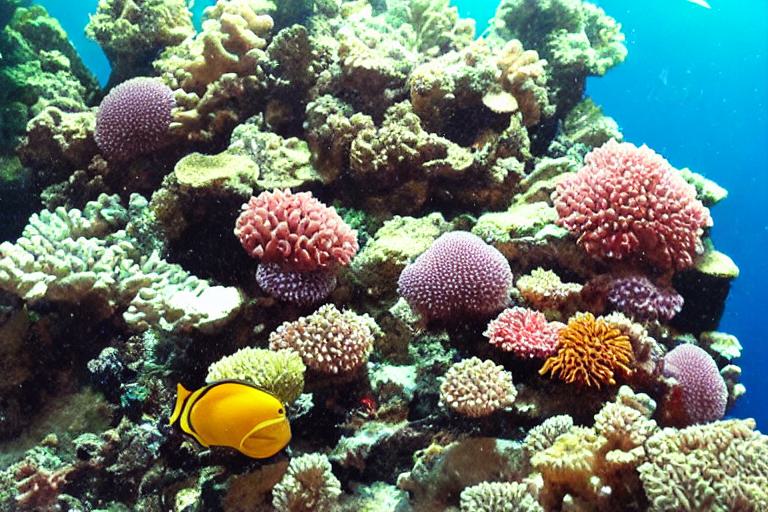
Resistant to disease
However, there are a few diseases that can affect corals, and it is important to be aware of these in order to prevent them from occurring. Corals are generally very resistant to disease, and can often recover from even the most severe bleaching events.
White band disease can be fatal to corals, and so it is important to take measures to prevent it from occurring in your reef tank. The most common disease that affects corals is white band disease. This disease is caused by a bacteria that attacks the coral’s tissue, causing it to turn white.
This disease is caused by a different bacteria than white band disease, and it affects the coral’s skeleton. The bacteria causes the coral’s skeleton to turn black, and eventually the coral will die. Another disease that can affect corals is black band disease.
quarantining the sick coral is the best way to prevent the disease from spreading to other corals in your reef tank. There are a few other diseases that can affect corals, but these are the two most common. If you suspect that your coral is sick, it is important to take measures to prevent the disease from spreading.
Best Corals Species For Beginners
When it comes to corals, there are a few species that are well-suited for beginners. These include soft corals, like leather and toadstools, as well as large-polyp stony (LPS) corals, like brain and frogspawn.
Soft corals are relatively easy to care for and can tolerate a wide range of water conditions. They are also less likely to sting or damage other corals in the tank.
LPS corals are a bit more challenging to care for, but their large, showy polyps make them a popular choice for reef tanks. They are also less likely to sting or damage other corals.
If you are just starting out with corals, it is best to choose a few easy-to-care-for species. Once you have a better understanding of coral care, you can start adding more challenging corals to your tank.
1. Toadstool Corals
They are a popular choice for reef aquariums because of their vibrant colors and interesting shapes. Toadstool corals, also known as mushroom corals, are a type of large polyp stony coral. Toadstool corals can be difficult to care for, however, and require specific conditions to thrive.
Toadstool corals are typically found in shallow water habitats, where they receive plenty of light and water movement. These corals can grow to be quite large, with some specimens reaching over a foot in diameter. Toadstool corals are native to the Indo-Pacific region and can be found in a variety of colors, including red, green, blue, and purple.
In a reef aquarium, toadstools should be given plenty of room to grow and should be placed in an area with strong water movement. In the wild, toadstool corals are often found in areas with high levels of coral diversity. This is because toadstools require a lot of space to grow and thrive. They also need high levels of water movement to help them remove waste and debris.
In the wild, they capture small prey items with their tentacles and bring them to their mouths. In the aquarium, toadstools can be fed live foods, such as brine shrimp or mysis shrimp. Toadstool corals are carnivores and require a diet of small meaty foods. It is important to feed toadstools regularly, as they are very slow growers. They can also be fed frozen foods, such as bloodworms or krill.
Toadstool corals are sensitive to changes in water quality and will not tolerate poor water conditions. They require regular water changes and should be kept in an aquarium with a stable water chemistry. Toadstools are also sensitive to changes in lighting and water flow, and should be acclimated slowly to any new conditions.
With proper care, toadstool corals can be a beautiful and interesting addition to any reef aquarium. They are slow-growing corals, however, and will require patience and dedication to thrive.

2. Mushroom Corals
Mushroom corals are one of the most popular types of corals for reef tanks. Mushroom corals come in many different colors and sizes. They are a great addition to any reef tank. They are easy to care for and are very beautiful.
They can live in both salt and fresh water. Mushroom corals are very hardy and can live for many years. They do not require much light or water. Mushroom corals are very easy to care for.
If you are looking for a coral that is easy to care for and is very beautiful, then mushroom corals are the perfect choice for you. They are beautiful and easy to care for. Mushroom corals are a great addition to any reef tank.

3. Pulsing Xenia Corals
Pulsing xenia corals are one of the most popular corals for reef tanks. They are easy to care for and grow quickly. These corals are known for their pulsing movement, which is caused by the contraction and expansion of their polyps. They require moderate lighting and water flow. These corals do best in tanks with plenty of live rock for them to attach to. Pulsing xenia corals can be found in a variety of colors, including pink, purple, green, and orange. Pulsing xenia corals are not recommended for beginners, as they can be difficult to care for.

4. Bubble Corals
Bubble corals are a type of large polyp stony coral. Bubble corals are a popular choice for reef aquariums because of their beautiful colors and interesting shape. Bubble corals are found in a variety of colors, including white, green, blue, and orange. They are characterized by their large, round, bubble-like shape.
Bubble corals are easy to care for and can be a great addition to any reef aquarium. Bubble corals are not aggressive and can be kept with a variety of other coral species. They prefer to be in areas of moderate to high water flow and need to be fed small amounts of food daily.
If you are looking for a beautiful and easy-to-care-for coral for your reef aquarium, consider a bubble coral.

5. Zoanthids Corals
Zoanthids are one of the most popular corals for reef tanks. Zoanthids can be propagated by breaking off a piece of the coral and attaching it to a rock or piece of live coral. They are easy to care for and come in a wide variety of colors and patterns.
Zoanthids are a great addition to any reef tank. Zoanthids can be propagated by breaking off a piece of the coral and attaching it to a rock or piece of live coral. They are easy to care for and come in a wide variety of colors and patterns.
Zoanthids are a great addition to any reef tank. Zoanthids can be propagated by breaking off a piece of the coral and attaching it to a rock or piece of live coral. They are easy to care for and come in a wide variety of colors and patterns.

How to Place Corals Inside the Tank?
The location should offer plenty of light and water flow. This can be done by performing regular water changes and using a quality filtration system. This can be done by slowly increasing the light and water flow over a period of time. Lastly, it is important to maintain the water quality in your reef tank. Second, it is important to acclimate your coral to its new environment. First, it is important to choose the right location for your coral. When it comes to placing corals in a reef tank, there are a few things to keep in mind.
Quarantine your corals (up to you)
One of the most important things you can do for your corals is to quarantine them. However, it is important to remember that corals are living creatures that need to be cared for properly. Coral reef tanks are beautiful, and many people want to have one in their home.
Quarantine is a process of keeping new corals separate from your existing tank for a period of time, typically 4-6 weeks. It also allows you to acclimate them to your specific water parameters slowly, which can help reduce the risk of shock. This allows you to observe them for any signs of disease or stress before introducing them to your main tank.
Second, you will need to provide them with proper lighting and water flow. Third, you will need to feed them regularly. First, you will need a separate tank for them. There are a few things to keep in mind when quarantine your corals. This can be a small tank or even a plastic storage container.
Quarantine is an important step in ensuring the health of your corals. It may take a little extra effort, but it is well worth it to keep your corals happy and healthy.
Using Dips to treat diseases
They are easy to use and can be very effective. Dips are a great way to treat diseases in corals.
There are a few things to keep in mind when using dips. Third, be sure to quarantine any coral you dip in order to prevent the disease from spreading. Second, follow the directions carefully. First, make sure the dip is the right one for the disease you are treating.
Dips can be a great way to effectively treat diseases in corals. Just be sure to follow the directions carefully and quarantine any coral you dip.
Drip Acclimate your Coral
However, it is important to remember that these tanks are very delicate ecosystems. Coral reef tanks are beautiful, and many people want to have one in their home. In order to have a successful coral reef tank, you must acclimate your coral properly.
The first step is to drip acclimate your coral. You will need to do this over the course of several hours. This means slowly adding the water from your tank to the coral, so that the coral can adjust to the new water conditions.
It is also important to acclimate your coral to the light in your tank. Coral are used to living in very bright conditions, so you will need to slowly increase the light intensity over the course of several days.
If you take the time to acclimate your coral properly, you will be rewarded with a beautiful and healthy coral reef tank.
Correct Placement
First, corals need light to thrive, so it is important to place them in an area of the tank where they will receive plenty of light. Secondly, corals need to be placed in an area with good water circulation, as they need to be able to filter water to get the nutrients they need. When it comes to placing corals in a reef tank, it is important to consider a few things. Lastly, it is important to consider the size of the coral when placing it in the tank, as some corals can grow quite large and may need to be moved to a different location in the tank as they grow.
First, corals need light to thrive, so it is important to place them in an area of the tank where they will receive plenty of light. Secondly, corals need to be placed in an area with good water circulation, as they need to be able to filter water to get the nutrients they need. When it comes to placing corals in a reef tank, it is important to consider a few things. Lastly, it is important to consider the size of the coral when placing it in the tank, as some corals can grow quite large and may need to be moved to a different location in the tank as they grow.
When placing corals in a reef tank, it is important to consider the following:
-The amount of light the coral will receive
-The water circulation in the area where the coral will be placed
-The size of the coral
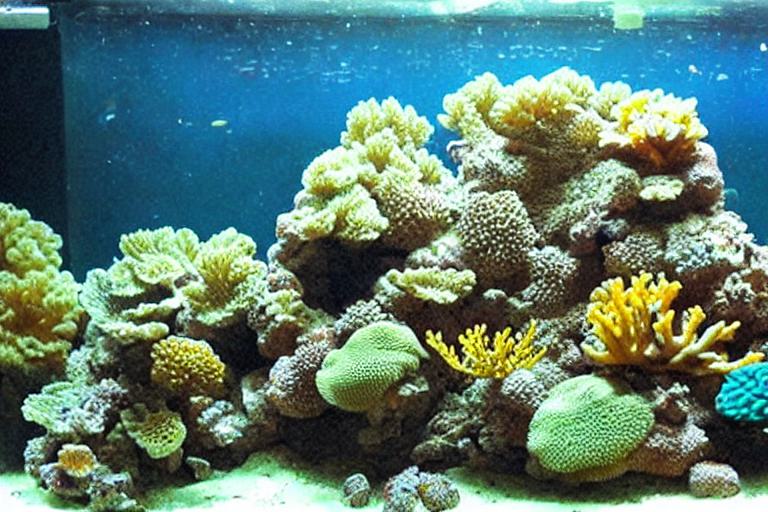
Care and Maintenance of Corals
Corals are a beautiful and delicate addition to any reef tank. Here are some tips on how to care for your corals: While they are relatively easy to care for, they do require some special attention.
Corals need light to photosynthesize and grow. Most corals prefer moderate to high lighting, so be sure to provide adequate lighting for your coral. Provide adequate lighting. 1.
Be sure to keep your tank clean and the water quality high to prevent your corals from dying. Keep the water quality high. 2. Corals are very sensitive to water quality.
Corals need to be fed regularly with small amounts of food. 3. Feed your corals. You can either purchase commercial coral food or make your own.
Be sure to remove any dead or dying corals from your tank as soon as possible. Dead or dying corals can release toxins into the water, which can harm other corals. 4. Remove any dead or dying corals.
By following these simple tips, you can keep your corals healthy and beautiful for years to come.
Cautions with Corals
Corals are beautiful and fragile creatures that require special care in order to thrive. Here are a few things to keep in mind when caring for corals:
Corals need clean water in order to survive. Be sure to perform regular water changes and use a high-quality filtration system. 1.
2. Corals are sensitive to changes in water parameters. Avoid sudden changes in temperature, pH, and salinity.
Corals need to be fed regularly. 3. Use a high-quality coral food or supplement their diet with live foods.
Be sure to quarantine new corals and watch for signs of disease. Corals are susceptible to disease. 4.
Final words on growing coral
Coral reef ecosystems are some of the most diverse and beautiful in the world. They are also some of the most threatened. Growing coral can help to restore these vital ecosystems.
These include pollution, overfishing, and climate change. Growing coral can help to restore these ecosystems. Coral reef ecosystems are under threat from a variety of human activities.
Growing coral can help to restore these ecosystems and ensure their future. Coral reef ecosystems are complex and delicate. They require careful management and protection.
Frequently Asked Questions
1. What are corals and why are they important?
Corals are marine invertebrates that belong to the phylum Cnidaria. They are important because they provide structure and habitat for a wide variety of marine life.
2. What are the basic requirements for growing corals?
The basic requirements for growing corals are a saltwater aquarium, live rock, and a coral reef substrate.
3. What are the different types of corals?
There are two main types of corals: soft corals and stony corals. Soft corals are not attached to the substrate and have a softer, more flexible skeleton. Stony corals are attached to the substrate and have a hard calcium carbonate skeleton.
4. How do I choose the right corals for my aquarium?
When choosing corals for your aquarium, it is important to consider the size of your aquarium, the type of coral, and the water parameters.
5. How do I care for my corals?
Coral care is relatively simple. The most important thing to remember is to never place corals in direct sunlight, as this can damage them. Additionally, it is important to provide adequate water flow and to maintain proper water quality.
6. What are the most common problems with corals?
The most common problems with corals are bleaching and disease. Bleaching occurs when the coral loses its symbiotic algae, which provides it with food. Disease can be caused by a variety of factors, including poor water quality, lack of water flow, and stress.
7. How can I prevent bleaching and disease?
The best way to prevent bleaching and disease is to maintain proper water quality and to provide adequate water flow. Additionally, it is important to quarantine new corals before adding them to your aquarium.
8. What should I do if I see my coral bleaching or showing signs of disease?
If you see your coral bleaching or showing signs of disease, the best course of action is to remove the coral from your aquarium and quarantine it in a separate tank.
9. Are there any other considerations I should keep in mind?
When growing corals, it is important to be patient and to research each coral species thoroughly before adding it to your aquarium. Additionally, it is important to give the corals time to adjust to their new environment before adding fish or other invertebrates.
Final thoughts
Corals are a fascinating and rewarding addition to any reef aquarium. With a little research and planning, even the most inexperienced aquarist can successfully grow corals. This guide has provided everything you need to get started, from choosing the right coral for your tank to keeping it healthy and happy. With a little time and patience, you can soon be enjoying the beauty and benefits of live coral in your own home aquarium.
